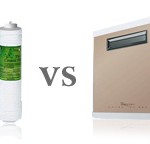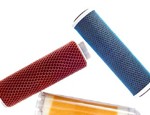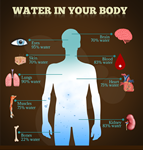Prefiltration Basics
In most cases, the internal filtration systems found in better quality water ionizers provide sufficient contaminant removal.
Depending on your source water, the quality of the filtration system in the water ionizer you choose, or just personal preference you may decide to add a pre-filtration system.
Common Reasons for Water Ionizer Prefiltration
There are three primary reasons customers choose a prefiltration system for their water ionizer.
-
- Well water or poor quality source water
- Effective fluoride reduction
- Limited contaminant removal by a water ionizer’s internal filtration system
In this article, you’ll learn about these primary reasons customers opt to use a prefiltration system with their water ionizer machine.
You’ll also learn the basics of which types of filters remove which contaminants. This should help you make an informed decision about whether or not to pre-filter your water and which type of pre-filtration may be best for you.
Well Water
If your source water comes from a well that does not have any type of filtration, some type of pre-filtration system is recommended. Bear in mind, a water softener is not a water filter. Water softeners do not remove anything from the water, they only alter the minerals in the water.
Unfiltered well water often contains higher levels of sediment, higher concentrations of heavy metals and hydrogen sulfide.
While the internal filtration systems in most water ionizers do address most of these contaminants, they are designed to be used with “treated” water which contains significantly lower levels of these contaminants.
Extra sediment in your water can cause filters to clog prematurely – especially if you have a water ionizer with .01 micron filtration.
Higher levels of hydrogen sulfide in source water can cause the water to begin to have an unpleasant smell after only a couple of months of use. Hydrogen sulfide is produced when organic material found in nature breaks down. It is what gives water a “sulfur” or “rotten egg” smell.
While most water ionizers will remove or reduce most heavy metal content in water, again – these filters are designed to remove/reduce levels consistent with treated water. While excess heavy metals are not likely to cause the filters in your water ionizer to become blocked, there may be so much heavy metal content in your well water that you will not get effective removal for the full life of the filter.
Iron is one of the most common metals found at higher levels in source water. Depending on the overall quality of your water, it can interfere with your ability to produce good quality ionized water.
If your well does have a sediment filter, a KDF filter is recommended for removal of heavy metals, hydrogen sulfide, and many other common contaminants.
If your well does not have any type of sediment filter, an additional sediment prefilter is recommended. Sediment filters are relatively inexpensive – no expensive filtration media – just the basics for catching the excess sediment.
Fluoride Removal
While some water ionizers will reduce trace amounts of fluoride from water, no water ionizer’s internal filtration system will reduce fluoride at any significant level.
The reason? Fluoride is notoriously difficult to remove from water. Even reverse osmosis can only reduce fluoride by 90 to 95 percent.
The EPA rates activated alumina as the best available technology for effective fluoride removal. Activated alumina will reduce fluoride by 80 to 90 percent, depending on the alkalinity of your source water. The more alkaline your source water, the stronger the fluoride bond. Activated alumina also removes arsenic from water.
While many may claim that activated alumina does not leave traces of aluminum in the water, most water filtration professionals recommend using a KDF filter cartridge after activated alumina. The alkalinity of your source water can have an effect on the potential for trace aluminum compounds to leach into the water.
Insufficient Water Ionizer Filtration
Some water ionizers use filters that are only rated to remove chlorine and lead. Other companies come right out and say that pre-filtration is recommended for fully effective broad range contaminant removal.
In these instances, GAC (granular activated carbon) paired with a KDF filter is often recommended. The most popular “supplemental” filtration system is a triple-bank system that includes one GAC cartridge, one activated alumina cartridge, and a KDF cartridge.
These triple-bank systems remove most contaminants from the source water, including a significant reduction of fluoride, while leaving the minerals necessary for ionization.
Not Sure About Your Water?
If your area uses a municipal water supply, your water company is required to publish a water quality report each year listing the contaminants found during regular testing. It’s a good start but sometimes the data is limited.
If you’re on well water you should have your water tested at least once a year to determine the types and levels of contaminants. Well water quality and the levels of contaminants found will vary based on rainfall amounts as well as changes in regional agricultural and industrial activities.
Knowing what’s in your source water and at what amounts will help you determine whether or not a pre-filtration system is worth the investment.




Leave a Reply